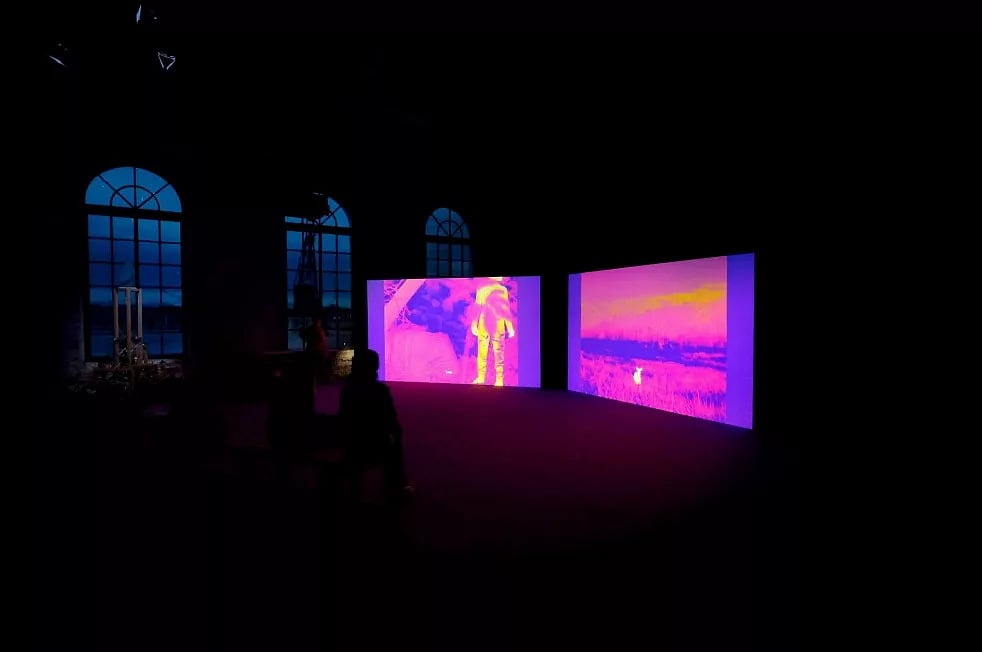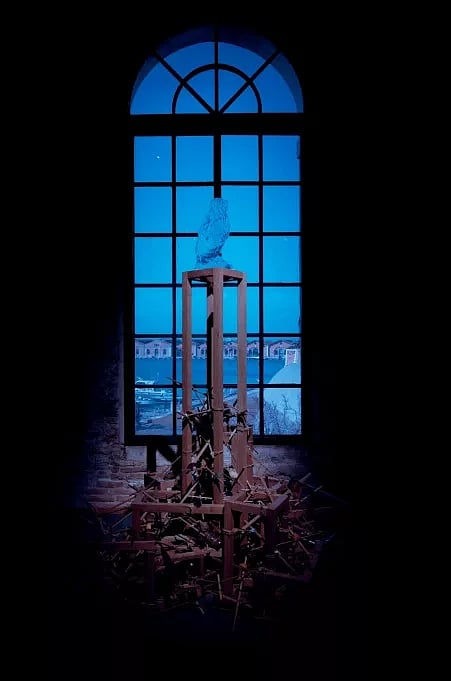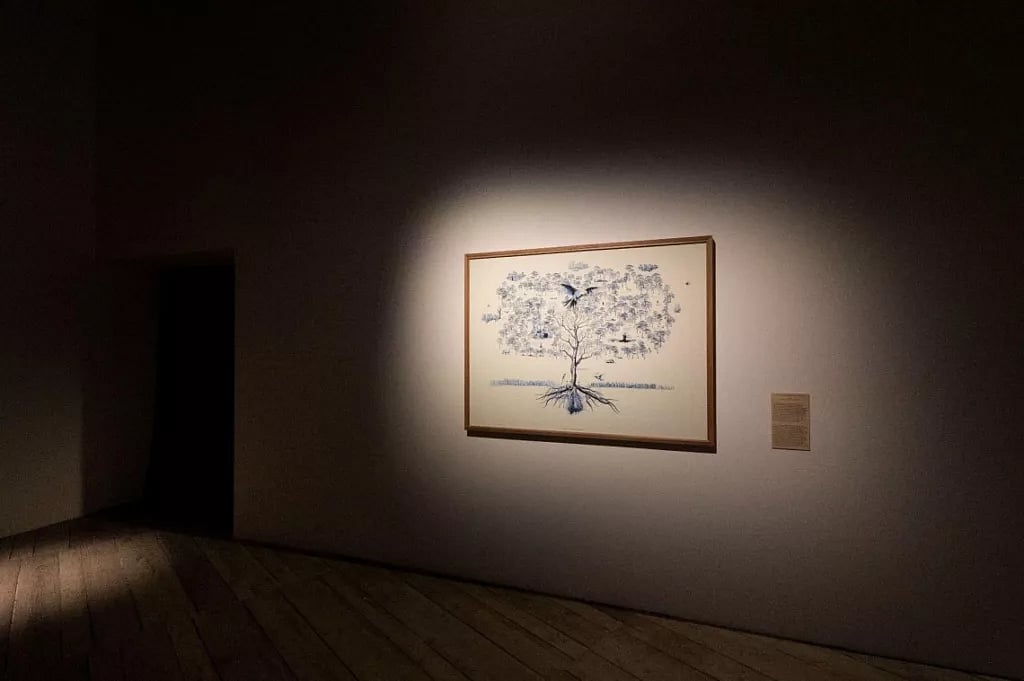Artist Robert Zhao Renhui’s exhibition Seeing Forest is representing Singapore at this year’s Venice Biennale. As visitors enter Seeing Forest, they step into a mysterious, forested zone that exists both in the imagination and in Singapore. In this in-between space called the secondary forest — a threshold between old-growth or primary forest and developed areas, between urban and wild, invention and reality — artist Robert Zhao Renhui invites us to consider a complex web of human and non-human co-existence.
Commissioned by NAC, supported by the Ministry of Culture, Community and Youth, and organised by SAM, this year marks Singapore’s 11th participation at the Biennale Arte. It was officially inaugurated on Wednesday, 17 April 2024 at 12.30pm, on the second floor of the Arsenale’s Sale d’Armi building. Seeing Forest opened on 20 April and will run till 24 November 2024. In January 2025, the exhibition will return to Singapore, where it will be reimagined for a second iteration at SAM at Tanjong Pagar Distripark.
Seeing Forest encourages visitors to explore the ways in which urban design can shape the natural world, and vice versa, resulting in a new ecosystem of migrant species that echoes the histories, trajectories and makeup of a city’s human population. A selection of compelling scenes compiled from hundreds of hours of film and close to a decade of Zhao’s research of secondary forests culminate in three key works: a two-channel video installation; a sculptural video installation; and a photographic work.
Two-channel video installation The Owl, The Travellers and The Cement Drain (2024) is the central work of the exhibition. The filmic essay reveals a series of hypnotic scenes from the forest — its trees and animals, migrant workers’ abandoned tents, migratory birds from a concrete drain — complemented by an unstable, fluctuating narrative of two human characters as they journey through it. By eschewing familiar documentary approaches, ecologically-minded activist perspectives, and the certainties of linear narrative, Zhao aims to transpose the forest into a new register: a mutable space of possibility.

Installation view of Buffy (2024) and The Owl, The Travellers and The Cement Drain (2024). Photo courtesy: Robert Zhao Renhui. |
In conversation with this work is the sculptural video installation, Trash Stratum (2024), which comprises over ten screens showing various creatures visiting a makeshift watering hole in the form of an abandoned dustbin. The screens are arranged around a deconstructed cabinet of curiosities built from Nyatoh and showcase a selection of compelling scenes compiled from hundreds of hours of film and close to a decade of research. This dismantled wunderkammer alludes to colonial systems of classification, destabilising control over natural history narratives in favour of more imaginative and fluid ways of drawing out relationships and networks. Within this structure, various objects from the forest can also be found, a poignant reminder of the presence of human histories, so often entangled with those of nature.
Buffy (2024) is a digital print of a bird native to Southeast Asia, the buffy fish owl. Zhao’s practice has often included photography and its indexical quality. In this work, Buffy has its back turned to us, an evocative reference to the Heraclitan fragment, “nature loves to hide”, perhaps suggesting that concealment and discovery are somehow connected, behaving like curious companions.

Buffy. Photo courtesy: Robert ZhaoRenhui |
Alongside the three key works, visitors will also encounter a digital printed map of an unnamed, imaginary forest. This work identifies the contours and features of the secondary forests that appears in other works presented in the Pavilion. The work orientates the visitor to the imaginal and natural zone, and serves as a guide to the characters and histories conjured up by Zhao’s works.
Artist Robert Zhao Renhui said: “I have studied secondary forests for close to a decade and they yield constant discovery, surprise and meaning to me. They exist on the margins of the city, unwanted and overlooked, but they are the spaces where there is a sense of wildness, an equilibrium of forces resulting not from control but being allowed to just be. There is a rich intermingling of past and present, nature and culture, native and invasive, which makes these spaces radically hospitable and free. I hope Seeing Forest offers a rich and ambiguous space where an imaginary forest comes alive through hypnotising images and sounds, invoking a sense of community, wonder and mystery with the myriad beings that populate it.”
The Pavilion’s curator Haeju Kim added: “Visitors are invited to observe the lingering details, narratives, and connections that unfold and become visible within the exhibition. Much like entering a forest, entering this exhibition is a bodied and temporal experience, one that draws attention to the relationship between what is seen and experienced with one’s physical self. Set against the backdrop of Singapore’s secondary forests, the exhibition provides one pathway to understanding the city’s history intertwined with nature. It invites us to an active listening and careful seeing of what is happening at the threshold of a rapidly developing city and the affected natural environment. In doing so, it suggests a humbling view of the world around us.”
Complementing Stranieri Ovunque — Foreigners Everywhere, the theme for Biennale Arte 2024, Zhao’s presentation offers a tribute to the undomesticated and free forests found along the margins of our urban lives. The exhibition encapsulates Singapore’s histories of settlement, colonisation, migration, and mutual co-existence amongst species.

A Guide to a Secondary Forest of Singapore. Photo courtesy: Robert Zhao Renhui |
Eugene Tan, Co-Chair of the Commissioning Panel and Chief Executive Officer of Singapore Art Museum (SAM), said: “Through sustained investigation of secondary forests in Singapore, Robert Zhao Renhui reveals the complexity, conflicts and equilibriums existing in these spaces, where hierarchies of native and invasive, local and foreign, the living and the dead are collapsed. These frontier spaces help us to imagine what environments not disciplined by binary logic can look like, and at the same time, allow us to wonder at the mystery of untamed spaces. Curated by Haeju Kim, Seeing Forest has the propensity to provoke thought and inspire mindful change, which represents SAM’s vision for the art we present. We are excited to be able to present and profile Zhao’s practice at this important international platform.”
Edwin Tong, Singapore’s Minister for Culture, Community and Youth said: “Art, in all its forms, has always been an integral part of society, and it is no different in Singapore. Our arts sector has grown tremendously over the years, and this is Singapore’s 11th participation at the prestigious Biennale Arte. MCCY is committed to showcasing our artists and our art at international platforms such as the Biennale Arte. We hope that Seeing Forest by Robert Zhao Renhui and curated by Haeju Kim will invite deeper reflection towards our relationship with nature and the environment, and offer hope as we look towards the future.”
Low Eng Teong, Co-Chair of the Commissioning Panel and Chief Executive Officer of NAC, Singapore, added: “Seeing Forest opens up a portal into Singapore, for the world to glimpse the rich, unexpected biodiversity within our urban spaces. Art imitates life as we reflect on the resilience of humanity in recent years, and how the different experiences have binded humanity even closer as one. NAC has supported Robert Zhao Renhui’s practice over the years and his participation in the 60th Biennale Arte marks an important milestone in his artistic journey. As commissioners of the Singapore Pavilion, this affirms the Council’s commitment to profile Singapore’s artists on an international platform, fostering further collaborations, and conversations with the global arts community.”
(The article is published under a mutual content partnership arrangement between The Free Press Journal and Connected To India)










